I tried a Google Calendar and Google Docs for this activity. I was planning to try out Google Notebook, but found out that Google has decided not to further their activity on development of that tool, so they were not accepting new accounts. From what I could tell, Google Docs accomplishes most of what Notebook offered plus has some added features.
The one I liked best was Google Calendar. As I mentioned in an earlier post regarding a Web 2.0 tool called Backpack, I really like the idea of an on line, sharable calendar. I think I would like it the most if I had a PDA that would electronically link the two. I struggle with the logistics of having all appointments on one calendar that can be shared with others. I currently use a combination of paper planner and electronic reminders, but that there is much room for error with this double, triple or even quadruple entry system. I am definitely planning to research this technology further to simplify this area of my world!
The Google Docs tool was okay. Honestly, I don't think I would use it much now. I might try it for compiling online research. The part of it that offers word processing, presentations and spreadsheets, I would most likely never use because I am such a Microsoft Office fan. I don't see the benefit of using Google docs over Microsoft other than possibly collaboration. That, really is what I see as the largest benefit of Google Docs in total. I may find that I need that tool when I reach the classroom. I will definitely keep it in mind should the need arise.
My links to both follow:
Google Calendar: http://www.google.com/calendar/render?tab=oc
Google Docs: http://docs.google.com/Doc?id=dd76772m_2gpgw6tcf
Tuesday, March 17, 2009
Monday, March 16, 2009
Thing #11: Finding Good Feeds
I tried the suggested RSS Feed search tools. Of all of them, I really just liked Google the best. I tried them all using similar search phrases for my topics of interest. It could be because of my familiarity, but I found that Google was the one who came up with feeds that were most like what I was looking to find. I was searching primarily for middle school science types of feeds. I found a couple that had some good videos of science projects that I can see using in the classroom. These would be great for showing students some of the various types of projects completed by students around the world. Though some of the blogs were, interesting, I found my self coming back to published information such as news and published articles more than individual blog posts. I guess they all have their place and time, but for me, right now, that is of most interest.
Thing #10: Learning About RSS Feeds
Well, it's my usual blogging time of 11:30 PM with my coffee in hand....
I REALLY enjoyed learning about RSS feeds. Not to complain, but like many people's lives, 48 hours in a day would still be full and busy in my world! I just don't have time to sit at the computer and "surf" to get the information that I know is out there regularly. I really like the idea of subscribing to my favorite sites and having the information come to me.
I created my account with Google Reader. I already had a Google account, so it was really easy. Also, I liked the fact that it worked so well with Blogger. Google Reader automatically pulled in the class blogs that I am following for Thing #4 as my first subscriptions. It also made sharing my favorites very simple. With one mouse click, I was able to add my shared favorites to my blog. Check it out in the top left corner. So, yes, I was up to the sharing challenge! In addition to the class subscriptions, I personally subscribed to The Leaf Chronicle, The Tennessean, Cool Cat Teacher, The National Science Teacher's Association and Dangerously Irrelevant. I definitely wanted some education blogs to view, but am also extremely news deprived due to my hectic schedule. Hopefully, this will get me up to date!
There are so many uses for this technology. Not only is this technology very useful personally, but I can see where it could be used in the classroom as well. Linking classroom projects and topics to real world uses and applications is definitely the name of the game. With so much information out there, I believe students are looking to grasp what they will use in their future. By bringing these real world applications right to their desktop, they will immediately be exposed to education at work. What a great tool for teachers!
I REALLY enjoyed learning about RSS feeds. Not to complain, but like many people's lives, 48 hours in a day would still be full and busy in my world! I just don't have time to sit at the computer and "surf" to get the information that I know is out there regularly. I really like the idea of subscribing to my favorite sites and having the information come to me.
I created my account with Google Reader. I already had a Google account, so it was really easy. Also, I liked the fact that it worked so well with Blogger. Google Reader automatically pulled in the class blogs that I am following for Thing #4 as my first subscriptions. It also made sharing my favorites very simple. With one mouse click, I was able to add my shared favorites to my blog. Check it out in the top left corner. So, yes, I was up to the sharing challenge! In addition to the class subscriptions, I personally subscribed to The Leaf Chronicle, The Tennessean, Cool Cat Teacher, The National Science Teacher's Association and Dangerously Irrelevant. I definitely wanted some education blogs to view, but am also extremely news deprived due to my hectic schedule. Hopefully, this will get me up to date!
There are so many uses for this technology. Not only is this technology very useful personally, but I can see where it could be used in the classroom as well. Linking classroom projects and topics to real world uses and applications is definitely the name of the game. With so much information out there, I believe students are looking to grasp what they will use in their future. By bringing these real world applications right to their desktop, they will immediately be exposed to education at work. What a great tool for teachers!
Tuesday, March 3, 2009
Thing #9: Online Image Generators
I had a lot of fun with the online image generators! I can see where students would really enjoy learning how to use them. They could be used to dress up a presentation, blog, etc. I used Image Chef the most because it had so many fun options. It was also so easy to use and add to my blog. I also worked with the Happy Face Generator too. With the many options to choose from, I think this would be a great way to get to know your students. I would think you could gain a little understanding of their mindset, likes, dislikes, etc. just by noticing which template choices they make and certainly by the messages they write. See if you can figure out mine...

DREAMING....

REALITY....

HOPEFULLY I WILL....

Links to online generators I used:
Happy Face Generator: http://www.happyfacegenerator.com/

DREAMING....

REALITY....

HOPEFULLY I WILL....

Links to online generators I used:
Happy Face Generator: http://www.happyfacegenerator.com/
Image Chef - Beach: http://www.imagechef.com/ic/make.jsp?tid=Beach
Image Chef - Jersey: http://www.imagechef.com/ic/basketball/
Image Chef - Flowers: http://www.imagechef.com/ic/make.jsp?tid=Growing+Flowers
Thing #8: Flickr Mashups
The Flickr Mashups were very cool! I had never heard of these before. I am amazed at the free things available on the internet!
I really liked the "Spell with Flickr" mashup. I had a little bit of trouble linking it to the blog. I had to play with the html for quite a while before I was able to post it with no errors. I am not sure why.....I need to investigate a little more.
I liked the puzzle creator too. This would be great for making gifts or something fun for home. I can see where both of these could also be used in the classroom to make the material more interesting and real for students. A puzzle creation of DNA for example would be a neat way to introduce that topic. I am still not a fan of open accessibility to family photos, but sharing photos of relevant people, places and things for information sharing is great. This is a wonderful way to have some of the experiences of "being there" without ever leaving your seat.
BOY PUZZLE

NAME TILES

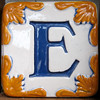
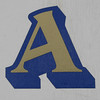

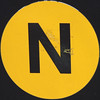

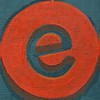 ">
">
I really liked the "Spell with Flickr" mashup. I had a little bit of trouble linking it to the blog. I had to play with the html for quite a while before I was able to post it with no errors. I am not sure why.....I need to investigate a little more.
I liked the puzzle creator too. This would be great for making gifts or something fun for home. I can see where both of these could also be used in the classroom to make the material more interesting and real for students. A puzzle creation of DNA for example would be a neat way to introduce that topic. I am still not a fan of open accessibility to family photos, but sharing photos of relevant people, places and things for information sharing is great. This is a wonderful way to have some of the experiences of "being there" without ever leaving your seat.
BOY PUZZLE

NAME TILES






 ">
">
Monday, March 2, 2009
Thing #7: Explore Flickr

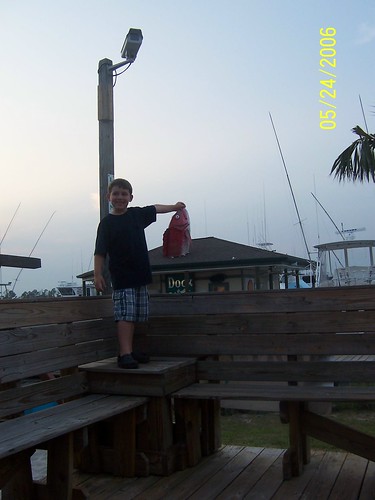
These pictures were taken by my husband a few years ago at the beach. My son is "rescuing" the fish......cute huh?
I really enjoyed learning about Flickr. I have heard about it many times, but this was the first time I tried it out. I actally created an account and uploaded some photos. I have all of them except these two photos privacy protected for family and friends because all are primarily family photos, but I might venture out in the future with some others that are not as personal. I would probably use Flickr primarily for personal use. I might also use this in the classroom for specific projects. The only other photo hosting service I have used in the past was Snapfish. I only used it once for Christmas cards. They both seem similiar, but Flickr seems to have a stronger emphasis on sharing. Since most of my photos are family, I am not overly eager to put them on the internet. I know they can be marked as private, but since there is no huge advantage for them to be on the internet for me, I probably will do that on a limited basis.
Thing #6: Discovering Web 2.0 Tools
There are some great tools out there!
I chose an organization Web 2.0 tool called Backpack. It claims to bring back a new form of Intranet on the Internet and from what I can tell, it does exactly that. With Backpack you can create groups and then share information within the group. You can easily share things like documents, calendars, presentations and much more. This would be a great tool for anyone in charge of keeping a group of people simultaneously informed. There is no limit to what types of groups you can create.
I can see that this would have many uses for teachers in the classroom. This would be a great tool for keeping and sharing things like a class calendar, syllabus, lab notes, project directions, test reviews and just about anything for your students. There is even an option for sending text reminders to the individual member cell phones for upcoming tasks. Wouldn't it be great to text your students to remind them of an upcoming test or project due date?
I am also pretty excited about Backpack personally. As a mom of three boys that love sports and are very involved in them, I plan to try this out with our family. Both sets of grandparents live in town and are always very interested to know the details of practices or games. I am going to put our schedules on a calendar that we can all access. This will be something my husband and I can also use to help us be on the same calendar with family events. We sometimes have mishaps in scheduling because an event gets on one calendar, but not all. Not only will it be on a calendar that we can both easily access(instead of the one on the refrigerator), we can use the text reminders to keep us on track. I am hopeful!!
Check it out at http://www.backpackit.com/
I chose an organization Web 2.0 tool called Backpack. It claims to bring back a new form of Intranet on the Internet and from what I can tell, it does exactly that. With Backpack you can create groups and then share information within the group. You can easily share things like documents, calendars, presentations and much more. This would be a great tool for anyone in charge of keeping a group of people simultaneously informed. There is no limit to what types of groups you can create.
I can see that this would have many uses for teachers in the classroom. This would be a great tool for keeping and sharing things like a class calendar, syllabus, lab notes, project directions, test reviews and just about anything for your students. There is even an option for sending text reminders to the individual member cell phones for upcoming tasks. Wouldn't it be great to text your students to remind them of an upcoming test or project due date?
I am also pretty excited about Backpack personally. As a mom of three boys that love sports and are very involved in them, I plan to try this out with our family. Both sets of grandparents live in town and are always very interested to know the details of practices or games. I am going to put our schedules on a calendar that we can all access. This will be something my husband and I can also use to help us be on the same calendar with family events. We sometimes have mishaps in scheduling because an event gets on one calendar, but not all. Not only will it be on a calendar that we can both easily access(instead of the one on the refrigerator), we can use the text reminders to keep us on track. I am hopeful!!
Check it out at http://www.backpackit.com/
Thing #5: Some Perspectives on Web 2.0/School 2.0 and the Future of Education
I have definitely enjoyed learning more about the Web 2.0 tools and I can easily see many great opportunities to use some of them in the classroom. To me, School 2.0 is the natural progression of taking this new technology and using it in the classroom to reach the next generation of students on their level. However, I do believe, these tools should be used to enhance and improve, not substitute, the teaching of basic learning skills.
I believe the future success of our schools with regard to School 2.0 depends on making sure we don't lose sight of the education purpose. As educators, the responsibility to the students is still the same. I believe communication, thinking, coping and problem solving skills are among the most important. How we teach it to students may change, but the basis of education remains the same. Just because we transitioned over the years from hand written papers (rock/chisel, chalk/slate, feather/animal skin, pen/paper), etc.)....type written papers...basic word processor produced papers...Microsoft word created papers...and on and on, the fact still remains that learning how to transfer thoughts to the written word in a presentable format is still a skill that students need. If the next generation of students learn to use the latest technology, but have no knowledge base for using the technology to solve societal issues, advance civilization or pass on key skills to the next generation, we have missed our mark.
I believe the future success of our schools with regard to School 2.0 depends on making sure we don't lose sight of the education purpose. As educators, the responsibility to the students is still the same. I believe communication, thinking, coping and problem solving skills are among the most important. How we teach it to students may change, but the basis of education remains the same. Just because we transitioned over the years from hand written papers (rock/chisel, chalk/slate, feather/animal skin, pen/paper), etc.)....type written papers...basic word processor produced papers...Microsoft word created papers...and on and on, the fact still remains that learning how to transfer thoughts to the written word in a presentable format is still a skill that students need. If the next generation of students learn to use the latest technology, but have no knowledge base for using the technology to solve societal issues, advance civilization or pass on key skills to the next generation, we have missed our mark.
Subscribe to:
Posts (Atom)
